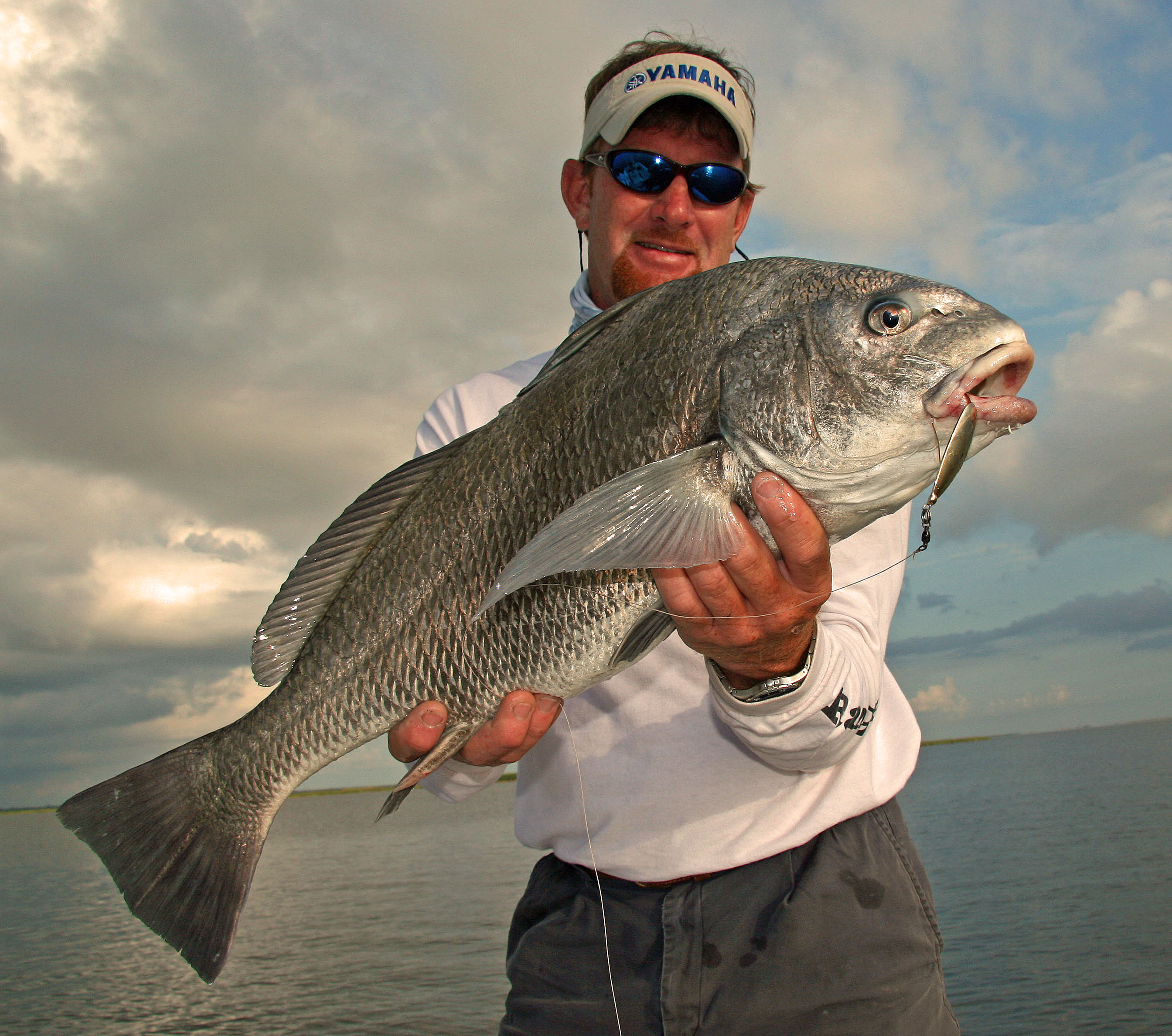
Fishing is an opportunistic sport that rewards the flexible and the open-minded. Cornerstone to that principle: Consider all of your options.
To quote Cheryl Crow’s Soak Up the Sun: “It’s not getting what you want, it’s wanting what you got.”
Throughout the Gulf of Mexico and the Southeastern Coast, anglers occasionally face this decision.
Whether it’s snook, redfish, spotted seatrout, tarpon and flounder in the shallow bays, beaches and estuaries, or the top-shelf grouper and snapper prized by offshore types; there will be times when the stars of the show simply don’t feel like performing.
Could be weather, fishing pressure or tide/current related. At certain times of the year, some of these big-name fish may be out of season (harvest closed). Or, maybe you’re catching the species you want, but you can’t find any of legal harvest size (if that’s your goal).
Whatever the case, don’t bail on a tough day; give the saltwater B-Team their moment at the plate and you may be surprised how often they’ll knock it out of the park.
We won’t dilute this discussion with every peripheral species that could possible appear. Rather, we’ll focus on the ones that are A) Frequent bycatch to popular targeted species and B) catchable with common baits and tackle.
INSHORE/COASTAL
If any fish defines this premise, it is the jack crevalle. Anglers call them “inshore tuna,” for their hard-charging nature and deep endurance. Smaller jacks are sometimes confused with pompano (inshore royalty), but the former has a longer profile, prominent pectoral fins, a rounder head and a distinctive black spot above its gills.
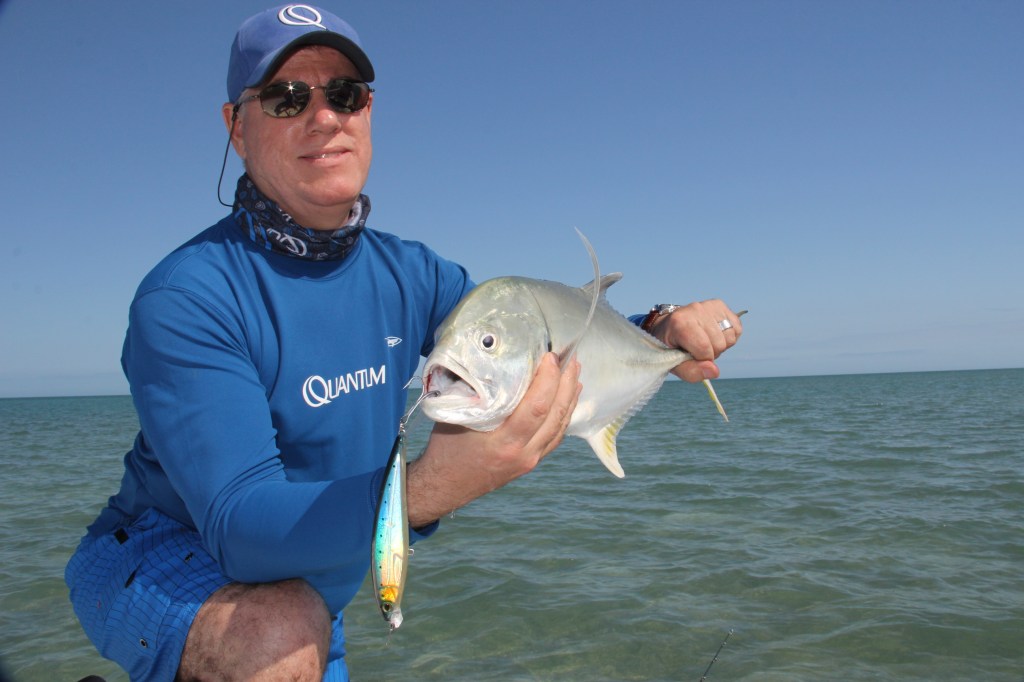
Jacks frequently reveal their position by ravaging bait schools with vicious pops and white water carnage and they won’t hesitate to blast any lure or bait that crosses their radar. One of the most widely dispersed B-teamer, jacks roam a diversity of habitat from the Mississippi Delta marshes, to coastal rock piles, mangrove edges and residential canals.
Hook one in the 5- to 10-pound range and that jack will give you all the fight you want.

Black Drum: Another strong fighter, this homely cousin to the redfish has a taller profile, dingy gray sides with dark vertical bars and chin barbels. Often found under bridges, around oyster bars, rock reefs, jetties and marinas, black drum eat the same baits that tempt redfish, but they’re partial to shrimp and crabs.
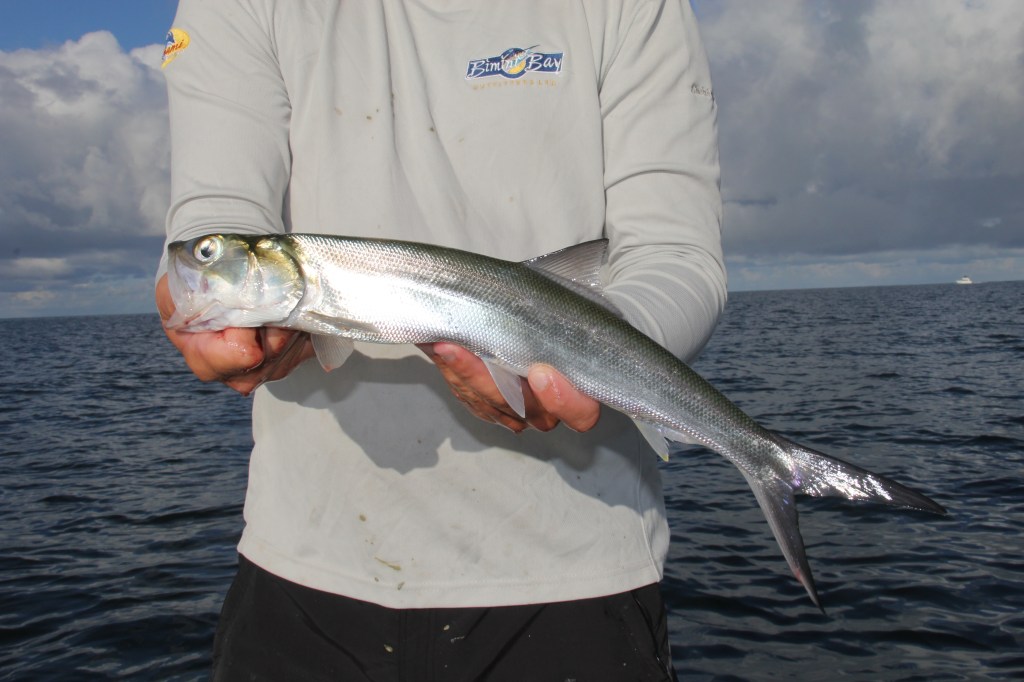
Ladyfish: Long and lanky with a big eyes and gaping mouths, this is another frequent inshore party crasher that will literally eat anything it can catch. Warning: Ladyfish have a nasty reputation for pooping on the deck, so hold them over the side of the boat when dehooking.
Dependably aerial, a hooked ladyfish will dazzle and delight young anglers and anyone that simply values frequent bites and a sporty battle. Some call them “the poor man’s tarpon,” because they’re much easier to engage than the giant sport fish that fuels a top-dollar charter fishery. Hook a ladyfish on light to medium spinning tackle and this fish will impress.
Fly fishermen love ladyfish because they’ll readily take smaller versions of the common tarpon flies and thrill novices with a scaled-down and more manageable experience. Learn to cast, strip a fly and set the hook on ladyfish, then move up to the heavier tarpon gear — a sensible training plan.
Also, we can’t overlook the bait value. Cut a fresh ladyfish into chunks and you have one of the best natural baits you’ll find. Big redfish, sharks, and snapper love their ladyfish nuggets, while hefty king mackerel will blast one of these shimmering B-teamers when slow trolled on a wire stinger rig.
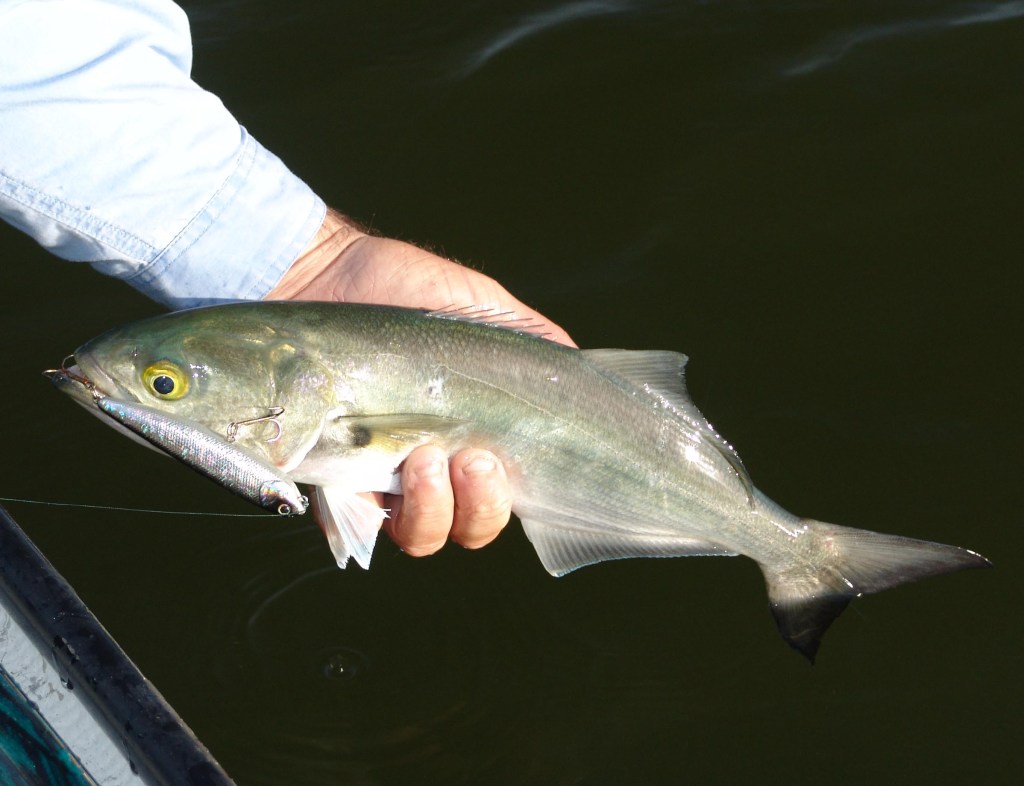
Bluefish: A big-time target for northeastern anglers, southern blues run considerably smaller, but their aggressive nature and schooling tendency presents a nice bonus potential to any day on the water. A hardier species than many inshore stars, blues will blast topwater plugs and grab live baits with equal enthusiasm.
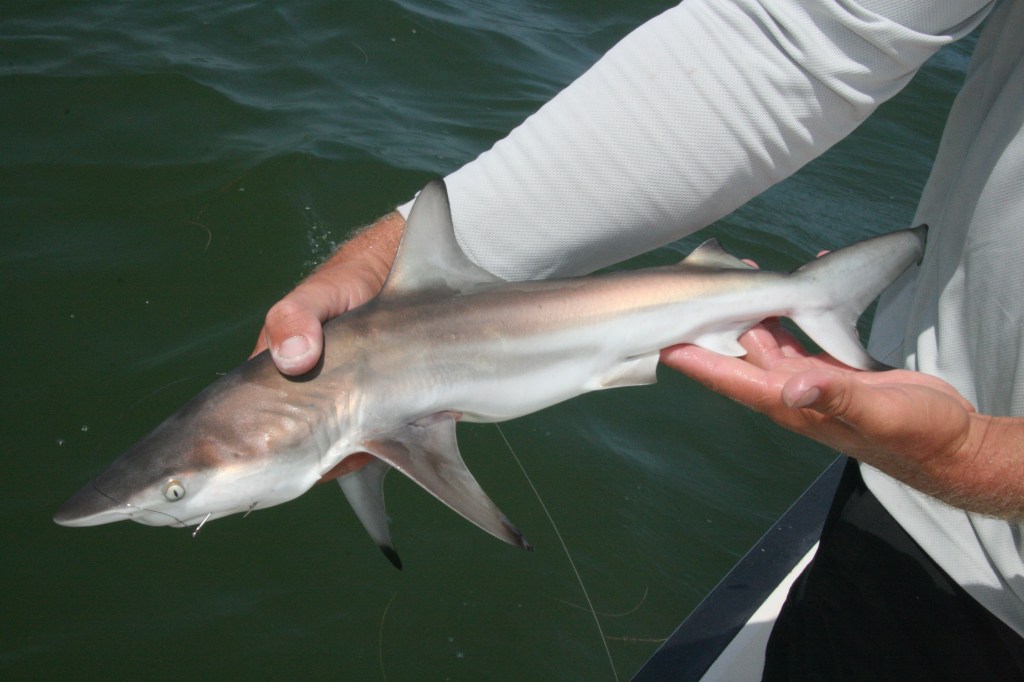
Sharks: Juvenile versions of coastal shark species often fall for the live sardines anglers fish over deeper grass flats and channel edges for a multi-species bag. Common species include bonnetheads, blacktips, sandbar, Atlantic sharp nose, bull and hammerhead.
If you want to target sharks, chum the area with cut sardines, fish whole baitfish on wire leader rigs and keep a long-handle hook remover handy. There’s no overstating the serious risk of very agile fish packing a mouthful of dental danger, so keep fingers and toes far from the business end.
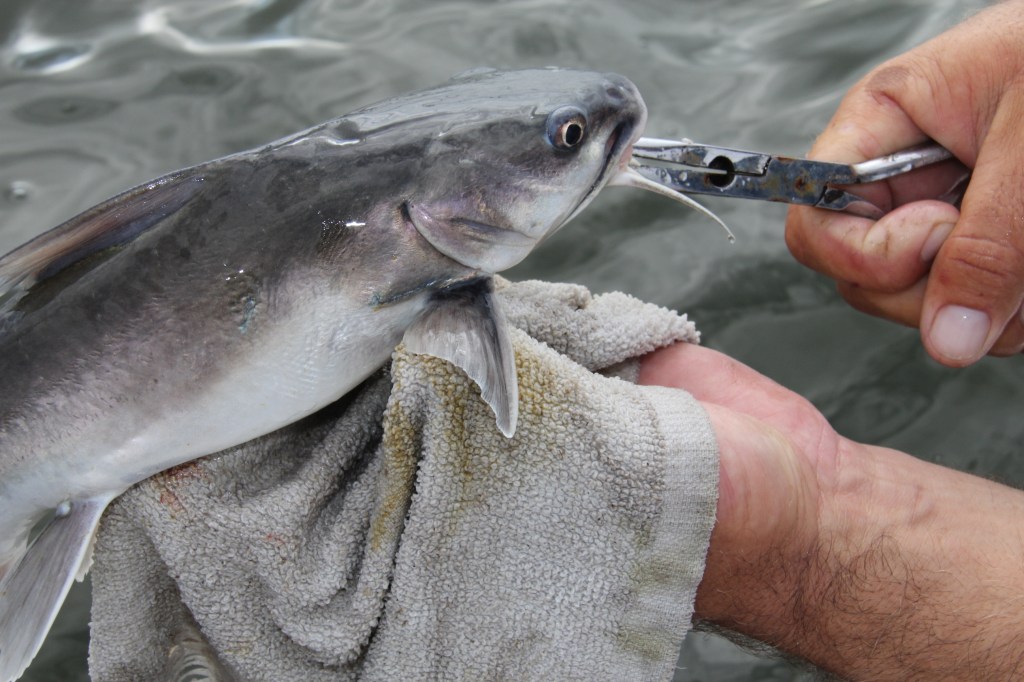
Catfish: Bring on the hate mail; I’m standing firm on this one. Saltwater catfish are typically held in much lower regard than the more edible freshwater versions. But while these slimy bait stealers with the hazardous dorsal and pectoral fin spines won’t replace seatrout, flounder or any of the more desirable species on the dinner plate, they deserve consideration.
First, if you’ve ever seen the massive balls of catfish that gather to gobble fish scraps tossed from a dockside cleaning station, you know there is no shortage. When most other species are nowhere to be found, you can always find catfish.
So, a cold, windy day virtually eliminates most of the sexier targets and you have a group of beginners and kids that just want something to tighten their line — whatcha gonna do? Heading in stamps “bummer” on the day’s memory and possibly discourages disappointed beginners from trying again.
Or you can rock their world with nonstop action.
Park your boat near a channel edge, a deep grass flat or a marina dock, chum the water with cut baitfish, cut shrimp and/or a frozen chum block and have fun with the “whisker trout.” Sure, it’s not the apex of sport fishing, but if you need a day-saver, this is your fish.
I recall a night several decades ago when I waded onto the shallow flats flanking Tampa Bay’s Courtney Campbell Causeway and absolutely waylaid the catfish. Sure, that’s nothing I’d brag about today, but I was hosting a novice angler and to say we caught ‘em on every cast for two hours is no exaggeration. We stopped counting at 30 and burned through three containers of frozen shrimp.
Worth noting, saltwater anglers will find the usually smaller hardhead catfish most abundant, while the larger growing gafftopsail catfish tends to be more of a loner. “Sail cats” sport distinctly longer pectoral and dorsal fins, along with longer whiskers, and possess greater fighting ability.
Handle both with care, as those dorsal and pectoral spines can inflict painful pokes.

Oddballs: Live baits and light jigs fished over grass flats with sandy potholes will occasionally catch the attention of a lizardfish, which actually looks like a toothy lizard with fins. A smaller species that may reach a foot or so in length, this unique creature makes for an interesting trip photo, but keep fingers clear of those teeth.
Another one that seems to favor small jigs fished through inlet and channels, the sea robin has an oversized head, broadly rounded pectoral fins and a set of leg like belly spines used to skitter across the bottom in search of food.
SURF/PIERS
Pompano, whiting, flounder, redfish and seasonal appearances by trout and snook (Florida) dominate the surf scene, but between these opportunities, croakers fill in nicely. A member of the drum family, croakers resemble the general redfish form, but they lack the prominent tail spot and their flanks are lighter, with golden diagonal markings.
With croakers often found in the shallow beach swash, you don’t have to walk far on the pier. Just consider that, on popular beaches, lifeguards often prohibit fishing at the base of a pier. This rule keeps hooks and sinkers away from swimmers and folks walking through the shallows beneath a pier. Fortunately, croakers appear all along the beach, as well as in the bays and coastal rivers.
A similar species, the spot, looks like a short, stumpy version of the croaker with a distinctive dark blotch above the gill plates. From open beaches, to inlets and piers, spots eat shrimp, clam strips and fresh blue crab knuckles.
On Florida piers and bridges, the sheepshead’s black and white stripes stand out clearly, but these tasty A-teamers can be notoriously picky. Another black and white striped species, the spadefish, can’t compete on the table fare, but their willingness to bite cut shrimp and squid provides a sporty option.
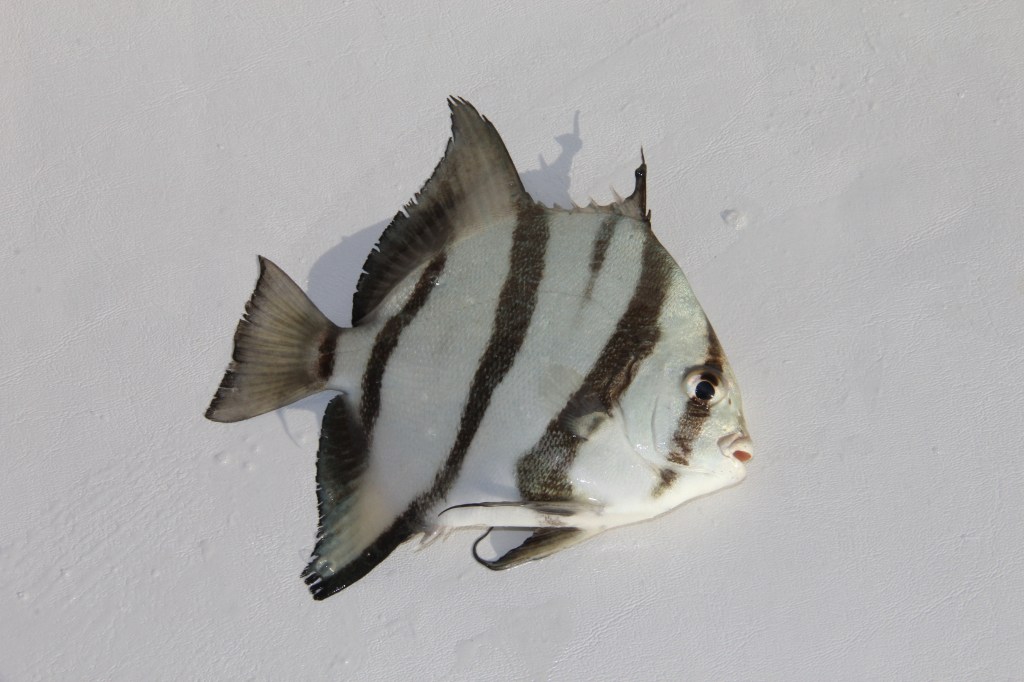
OFFSHORE OPPORTUNITIES
Deeper trips require a greater commitment of time and resources, so wasted days prove more painful. For bottom fishing trips, one of the most consistent B-teamers — the white grunt — comes very close to meriting a starting position.

Distinguished by their reddish orange mouths and vertically expanding jaws, these aggressive bottom fish max out around a pound and a half to 2 pounds, so they’ll yield to bigger reef fish. However, while those gag and red grouper, or larger snapper are making up their minds, grunts are quick to pounce on a chunk of dead sardine or squid.
Even when those preferred species are likely to cooperate, experienced anglers know that getting the grunts and other “reef rats” fired up often attracts larger predators. So, from a fishing perspective, grunts play valuable role as an appetizer or the main course.
Playing off that culinary metaphor, I’ve often fried white grunt fillets alongside snapper fillets and no one at my dinner table knew the the difference. And trickery is not the point here; rather, we’re simply noting that good table fare is good table fare, regardless of the fish from which it came. Personally, I’ll gladly clean a pile of grunts any day of the week.
Same goes for black sea bass. A beautiful fish in the same family as the groupers, this feisty species sports a mottled black/brown coloration, often with a white speckled pattern from the belly upward. Found around reefs and rock piles from the coastal to offshore waters the sea bass likes jigs tipped with shrimp and small chunks of sardine or squid.
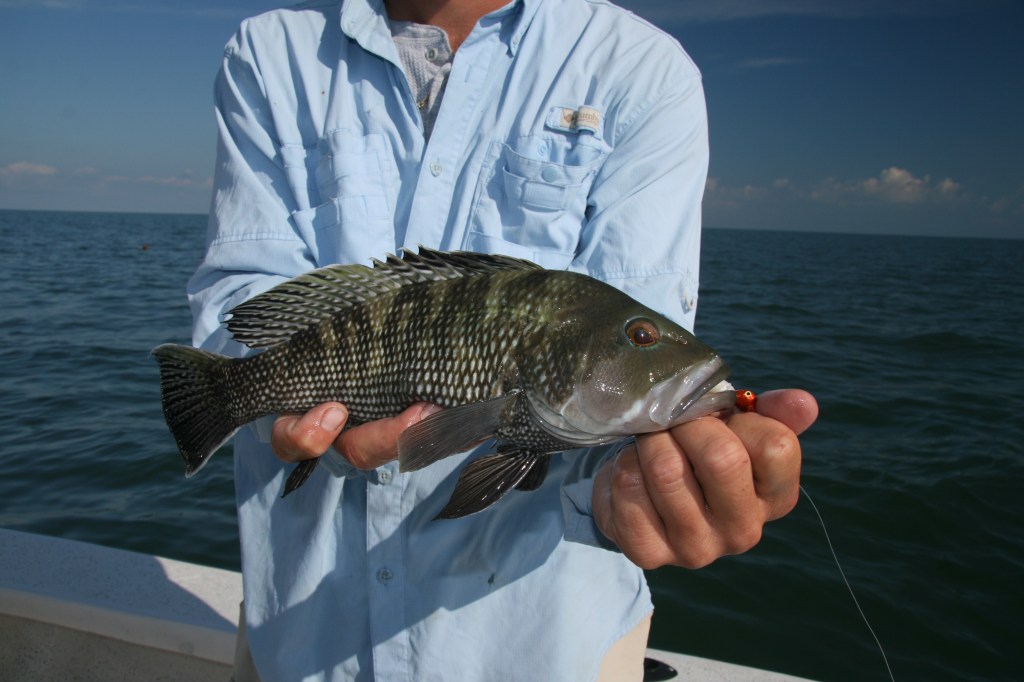
One more that we have to mention may surprise some, but it’s legit — the blue runner. A member of the jack family, this beefy baitfish reaches a couple pounds and makes an outstanding offshore baitfish for giant grouper, amberjack, and king mackerel.
Best of all, these impressively strong fish are a blast to catch. Around the Northern Gulf drilling rigs, anglers catch the biggest runners on jigs and small spoons, but the smaller ones are easily fooled with a sabiki rig — a string of gold hooks anchored by a sinker.
While it’s generally a utilitarian task, gathering blue runners for a day of fishing is a great way to get kids and beginners involved. Put it this way, on a past kingfish trip, my fishing partner and I hosted a couple of corporate pals who had so much fun catching runners we had to convince them to stop so we could actually go catch kings.
Notably, blue runners occur inshore and offshore, so keep those sabiki rigs handy. Wherever you find them, a hook-out tool (a hand with a crooked piece of wire) allows you to grab the sabiki hook and flip your blue runner into a bait well or back into the water without touching.
With all of these scenarios, know your seasons and species size/bag limits so you’re always on the right side of the law. Keep a diverse array of tackle handy and when the headliners don’t deliver, swallow your pride and give the B-teamers a try.
Catching something is better than catching nothing.





